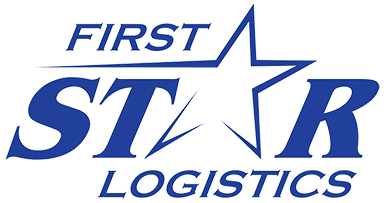The transportation and logistics industry is undergoing a significant transformation driven by the rise of artificial intelligence (AI). This technology has the potential to revolutionize everything from route optimization to autonomous vehicles, impacting shippers, carriers, brokers, and agents in profound ways.
Join us as we discuss the current state of AI in transportation and logistics, how new and emerging technologies can be implemented, review current trends, and look toward the future.
What is AI in transportation and logistics?
AI in transportation and logistics refers to using advanced computing techniques to automate and optimize various assets and processes within the industry. This includes route optimization, demand forecasting, predictive maintenance, and autonomous vehicle operation. AI algorithms analyze large volumes of data from various sources, such as sensors, GPS systems, and historical records, to make informed decisions and improve efficiency, safety, and cost-effectiveness in transportation and logistics operations.
How can AI be used in transportation and logistics?
The applications of AI in transportation and logistics encompass a wide range of applications, with more on the way. Here are some notable examples:
- Route Optimization: AI algorithms can be used to assess various factors, such as traffic patterns and weather conditions, to determine the most efficient delivery routes, helping minimize fuel consumption and expenses.
- Predictive Maintenance: AI allows carriers and drivers to leverage sensor data from vehicles and equipment to anticipate potential malfunctions, allowing for predictive maintenance and reducing inconvenient downtime and costly repairs.
- Autonomous Vehicles: Industry innovators are always looking for ways to address complex transportation challenges and streamline processes. AI technology is fueling the exploration of self-driving trucks and drones that can handle long-haul transportation and last-mile delivery tasks, potentially enhancing efficiency, safety, and sustainability.
- Demand Forecasting: AI models can be used to analyze historical data and current market trends to forecast future demand for transportation and logistic services, enabling companies to optimize their resources and capacity accordingly.
- Automated Scheduling and Dispatching: AI algorithms can be used to manage tasks such as driver assignments and route scheduling, freeing up human resources for more strategic endeavors.
Current AI Logistics and Transportation Trends
From integrating cutting-edge technologies to optimizing supply chain processes, businesses are embracing AI-driven solutions to enhance efficiency and stay ahead in the competitive market. Here are some key trends shaping the industry:
Rise of Smart Supply Chains with IoT and Blockchain
Integrating the Internet of Things (IoT) and blockchain technologies revolutionizes supply chain management, enhances transparency, and bolsters security. IoT facilitates seamless connectivity across the supply chain, generating a wealth of data points for identifying potential issues and optimizing processes. Meanwhile, blockchain offers a robust solution for securely encrypting data exchanges between logistics parties, streamlining paperwork requirements, and enabling real-time tracking like never before.
Embracing of Digital Twins
Adopting digital twins, virtual replicas of assets and processes, is proving instrumental in real-time monitoring and performance enhancement within the logistics industry. By providing a comprehensive view of assets and operations, digital twins empower freight brokers to optimize routes, manage inventory, and make data-driven decisions with precision.
Expansion of AR/VR Training
Augmented Reality (AR) and Virtual Reality (VR) technologies are gaining traction for training, offering a safe and immersive learning environment. These technologies help professionals enhance their skills and help organizations refine workflows without exposing individuals to real-world risks.
Rise of Autonomous Vehicles and Drones
The emergence of autonomous vehicles and drones powered by AI has the potential to reshape transportation logistics, with numerous startups and established companies exploring their potential benefits. These technologies can reduce accidents, lower costs, and improve delivery times, particularly for last-mile deliveries. Using drones for last-mile deliveries presents an opportunity to mitigate labor costs; though still in developmental stages, the possibilities are eagerly being explored.
The Future of AI in Transportation and Logistics
The future of AI in transportation and logistics is full of possibilities. We can expect continued advancements in existing technologies and the emergence of new applications that will further transform the industry. As AI becomes more sophisticated, available, and integrated into systems, it will be crucial in creating a more efficient, sustainable, and accessible transportation and logistics system for everyone.
With over 60 years of experience as an asset-based global logistics provider, First Star Logistics is equipped with the tools and expertise to lead carriers, shippers, brokers, and agents into the future of transportation and logistics. To work with First Star Logistics, contact us today!



